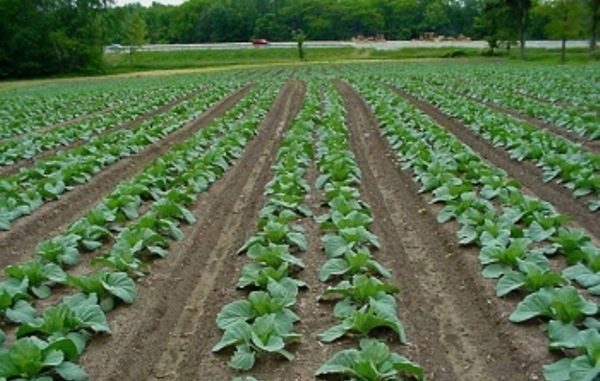 Cabbage is most often grown in seedlings. Sowing seeds is carried out in seedlings, and then transplanted to the garden. However, some gardeners prefer to sow cabbage seeds directly into the ground. Growing cabbage without seedlings significantly saves time and labor.
Cabbage is most often grown in seedlings. Sowing seeds is carried out in seedlings, and then transplanted to the garden. However, some gardeners prefer to sow cabbage seeds directly into the ground. Growing cabbage without seedlings significantly saves time and labor.
Content
Features of seedling cabbage growing
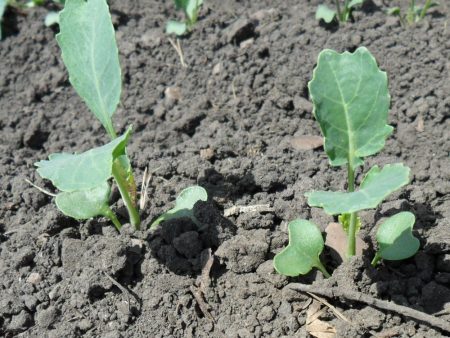 Not all cabbage seedlings turn out to be of high quality. Either it is stretched excessively, the root system is formed weak, or the seedlings generally die for no apparent reason. In most cases, problems with seedlings occur due to a lack of light: cabbage is a photophilous culture, and in room conditions it simply does not have enough lighting for full development.
Not all cabbage seedlings turn out to be of high quality. Either it is stretched excessively, the root system is formed weak, or the seedlings generally die for no apparent reason. In most cases, problems with seedlings occur due to a lack of light: cabbage is a photophilous culture, and in room conditions it simply does not have enough lighting for full development.
Growing seedlings in a heated greenhouse or greenhouse solves the problem with lighting, but this way to get strong plants involves additional costs for the acquisition and maintenance of the greenhouse. In addition, greenhouse seedlings are demanding of irrigation conditions and the microclimate - if something goes wrong, the seedlings will die if they become ill with a black leg or other unpleasant disease.
All these problems disappear if you do not grow cabbage through seedlings, but sow seeds immediately into the ground. The seedless method of growing a crop has several advantages. With soil sowing, plants harden naturally. They gain strong immunity to cold, heat and drought, yield crops two weeks earlier than seedlings. Moreover, vegetable growers note that heads of cabbage are produced much denser, the content of dry matter and vitamin C increases. Due to the fact that seedlings are not needed to be transplanted, the root system of seedlings does not suffer, it develops much better, and accordingly, productivity increases.
There is an opinion that the seedless method is suitable only for the chernozem strip of the country and southern regions. However, in practice, this method works well even in the north of the country, providing consistently high yields at minimal cost.
The disadvantages of the seedless method include:
- high seed consumption (1.5-2 times more than with the traditional method);
- more painstaking care at the initial stage of the growing season;
- application of additional measures to protect seedlings from insects and infections;
- careful site selection and soil preparation.
Seeding time
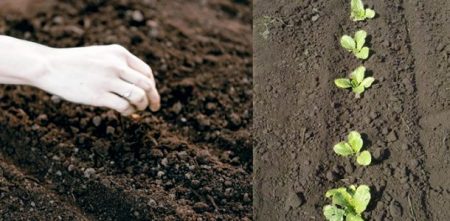 Varieties ripening in the medium term are sown in mid-May (from 10 to 15 days). Middle-late cabbage is sown from May 5 to 10. Cultivation of late ripening varieties begins in the last decade of April.
Varieties ripening in the medium term are sown in mid-May (from 10 to 15 days). Middle-late cabbage is sown from May 5 to 10. Cultivation of late ripening varieties begins in the last decade of April.
Young plants tolerate frosts up to - 4 degrees without any problems.
Seed germination conditions
Growing cabbage without seedlings does not imply any particular agricultural technology. The only nuance of the method is that it is necessary to cover the bed with crops with a film on top in order to create the necessary warm-humid microclimate above the soil surface. In fact, we grow seedlings immediately in the garden.
Seeds for soil sowing need a lot, as inevitably part of the sprouts will be lost, and another part will be thinned out. Developing immediately in a large amount of land, seedlings form a powerful root system that grows to decent depth. So seedlings "earn" immunity to moisture deficiency. Cabbage is well developed on light and loose soil, enriched with fertilizers. In the fall, manure or peat compost is made for digging. Or in the spring, when the beds are touched, the earth is fertilized with humus.Culture is demanding on the presence of minerals. Therefore, in spring, the soil is supplied with complex mineral compositions. Soil during sowing should be disinfected from pathogens, cleaned of weeds and thoroughly saturated with moisture.
It is best to grow cabbage after nightshade crops.
Preparation of holes for sowing
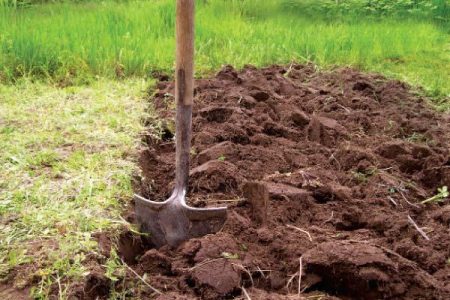 Often, the complexity of the seedling method is poor seed germination. This is explained by the very small size of the seed: when irrigated, the seeds simply fall deep into the ground and from there they can no longer break out. You can increase the number of seedlings if you put the seeds on a slightly tamped bottom of the hole. Dense earth will firmly fix the seeds in one place, and they will sprout successfully. Farmers recommend making holes with a plastic bottle (you need to push the bottom into the ground by slightly scrolling the bottle). Or, having made glanders, palm down a little to trench the bottom of the trench.
Often, the complexity of the seedling method is poor seed germination. This is explained by the very small size of the seed: when irrigated, the seeds simply fall deep into the ground and from there they can no longer break out. You can increase the number of seedlings if you put the seeds on a slightly tamped bottom of the hole. Dense earth will firmly fix the seeds in one place, and they will sprout successfully. Farmers recommend making holes with a plastic bottle (you need to push the bottom into the ground by slightly scrolling the bottle). Or, having made glanders, palm down a little to trench the bottom of the trench.
Seed preparation
High germination of seeds is always ensured by high-quality seed. Therefore, with the seedless method of growing cabbage, it is important to carefully prepare the seeds, selecting only the largest and most durable. Calibration will reduce the time for sowing and in the future for the removal of incompetent sprouts. Since young cabbage is usually attacked by clouds by various insect pests, only strong, hardy seedlings obtained from disinfected seeds can cope with them. Therefore, the seeds before sowing must be disinfected with potassium permanganate, and then hardened in the refrigerator for 10-12 hours. If there is no certainty about the quality of the seeds, they are pre-soaked in a growth promoter and kept in a humid environment until they hatch.
Sowing seeds
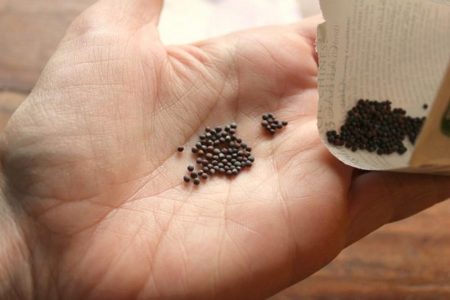 Seeds are sown in holes or shallow grooves. When patching in one hole, up to 5 seeds are placed in one hole. In the trenches, the seeds are laid one at a time every 10 centimeters so as not to thin out in the future. Depth of embedding - 2-3 centimeters. If cabbage is planted in rows, then the aisle should be 50-60 centimeters.
Seeds are sown in holes or shallow grooves. When patching in one hole, up to 5 seeds are placed in one hole. In the trenches, the seeds are laid one at a time every 10 centimeters so as not to thin out in the future. Depth of embedding - 2-3 centimeters. If cabbage is planted in rows, then the aisle should be 50-60 centimeters.
Crops sprinkled with slightly moist peat mixed with humus. The soil is slightly compacted. The top of the bed can not be watered, otherwise there is a risk that the seeds will be washed.
An improvised greenhouse is constructed above the garden from a double layer of film or non-woven material. If the sowing was done in the holes, then above each you can dig a plastic bottle with a cut bottom. To access fresh air in the plastic, several holes are made. The top layer of the film is removed after the appearance of sprout loops.
The first month it is better to keep seedlings under a thin agrospan. This will protect cabbage bushes from various garden parasites. Keeping cabbage under the film, it is important to prevent the sprouts from stretching and their aging. To do this, conduct regular ventilation and loosening of the soil.
By the way, in a reckless way you can grow not only white cabbage, but also broccoli and cauliflower. Sowing of their seeds is carried out three months before the expected harvest. When sowing, seeds are laid out in separate nests of 3-4 pieces. Depth of landing is 1.5-2 centimeters.
Seedling care
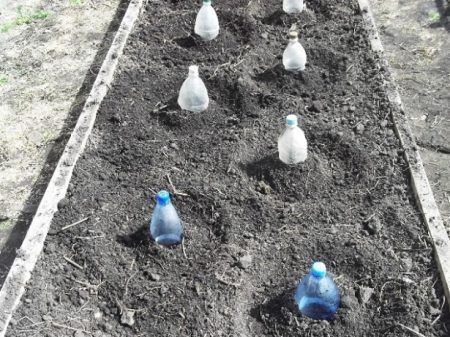 After sowing, the sprouts appear rather quickly - already for 3-4 days, provided that the weather is clear and warm, and the soil moisture is 80%. As soon as the first embryos of the sprouts appear, the bed is pollinated with ash or shaggy dust to prevent the appearance of uninvited guests in the form of a cruciferous flea or aphid.
After sowing, the sprouts appear rather quickly - already for 3-4 days, provided that the weather is clear and warm, and the soil moisture is 80%. As soon as the first embryos of the sprouts appear, the bed is pollinated with ash or shaggy dust to prevent the appearance of uninvited guests in the form of a cruciferous flea or aphid.
As soon as 3-4 leaflets bloom on the seedlings, and the stems grow by 10-15 centimeters, the plantings are thinned out for the first time. This time, all thin and small shoots are removed, leaving two of the strongest. With repeated thinning, the best plant is left.Remote seedlings are not thrown away, but are planted on a separate site - a crop can also grow from them, although not so large and of high quality.
If the soil is dense, then pulling out the sprouts can adversely affect the roots of neighboring plants. Therefore, in such a situation, extra shoots need to be cut with scissors at the root.
After the last thinning, the bushes are watered and podkookivaem.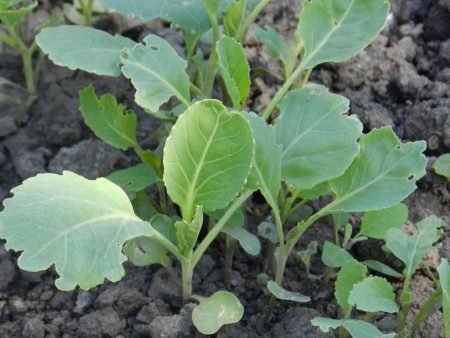
Hilling cabbage is carried out 3-4 times per season. This technique of agricultural technology stimulates root growth and improves nutrition of all the aerial organs of the cabbage bush. After each hilling, jumps in plant growth can be observed. In addition, the stem, covered with earth at the base, is reliably protected from waterlogging, and the roots from overheating. And when filling large heads of cabbage, an earthen mound will protect the trunk from breaking.
Cabbage should be watered often, but in moderation. Culture loves moisture, but from excessive moisture, heads of cabbage can crack and lose their presentation. The grown seedlings are watered twice a week, spending 500 milliliters of water for each plant. Such frequent watering contributes to the growth of a powerful leaf outlet. Already 1-2 liters of water are poured onto adult plants. During heading out each bush already needs up to 4 liters of moisture. During the ripening period, the water norm should be up to 2 liters every three days.
The soil should be moistened to a depth of 30 centimeters.
When stronger seedlings are freed from covering material, various insects can immediately choose it. Butterflies, cabbage fly and slugs (not to mention fleas) are especially fond of enjoying juicy leaflets. You can get rid of them with the help of chemical insecticides or using traditional methods of control: mulching the soil with eggshell, nettle, sawdust will help from slugs. Planting many marigolds, dill, mats, parsley or basil will help scare away many pests. When breeding cabbage flies and bears, spraying with drugs Barguzin, Medvetoks, Zemlin, Grizzly, Thunder will help. Karbofos-500, Spark M, Fufanon-Nova will save from thrips, whitewash, dustpan, moths, aphids and other plant pests.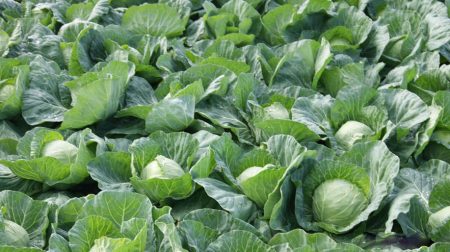
If cabbage grows on acidic soil, then this can cause the appearance of a disease such as keel, which manifests itself in growths and swelling on the roots. Unfortunately, it is impossible to cure the disease, but the spread of the infection can be controlled with the help of strong chemicals - Trichodermin, Alirin, Topaz and Previkur.
Cabbage responds well to top dressing. The first fertilizer application is carried out already when one strong seedling remains in the hole. This time, ammonium nitrate, superphosphate, potassium chloride are introduced into the soil. Spraying with nitrophos, Rasvtorin and Kemira wagon preparations is carried out. You can use ammonia water and a solution of organic fertilizers. The second feeding of cabbage occurs during the formation of heads of cabbage.
The crop of early ripening varieties ripens by the end of summer. Middle grades reach readiness in September. The collection is carried out from early September to late October. Do not be afraid of small frosts - with a slight decrease in temperature, cabbage accumulates more sugar and juice.
Reviews
Lyudmila
This year I decided to try a reckless way. Sown the seeds of the late variety "Moscow" in late April under the film. Everyone was afraid that they would not rise, but the weather was warm all spring, which may be why the seedlings quickly appeared, after 5 days. Seedlings grew amicably, all seedlings are strong, as on selection. 3 seeds were put into the hole, and the sprouts sprouted all the same, so the thinned seedlings also planted. By the way, of these, cabbage grew as large. I liked the method by the fact that you do not need to keep bulky seedling boxes in the house, dive, because it turns out that you can grow a pretty decent cabbage crop without too much trouble on the street garden.
Anastasia
For many years I have been growing cabbage in a non-seedling way, because I know from bitter experience that the survival rate of seedlings is very poor. The roots are weak, often damaged when diving or landing on a bed. And then there are no problems - cabbage grows immediately for permanent residence, the roots grow strong, heads are always poured large and juicy. In addition, cabbage grown from seeds is less likely to get sick, because it has a stronger immunity.
Michael
I tried to grow cabbage through seedlings and sowing seeds. Honestly, I did not see any special differences. In both cases, I always get plants that are strong and healthy. Harvest ripens at the same time. I believe that if the site is located at the house, then it is better to use the seedling method. Well, if the garden is far beyond the city, then it is more rational to grow cabbage seedlings in apartment conditions.
Conclusion
Millions of gardeners are already using the technique of soil sowing cabbage, thus obtaining significantly more tasty healthy crops. And although this method is not without drawbacks, nevertheless, due to the reduction in labor costs and time for growing seedlings, the seedless method is worthy of you to experience it.

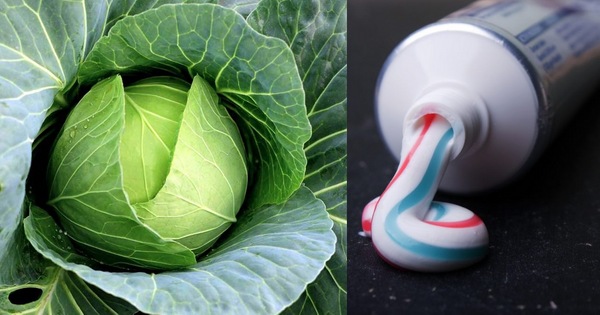
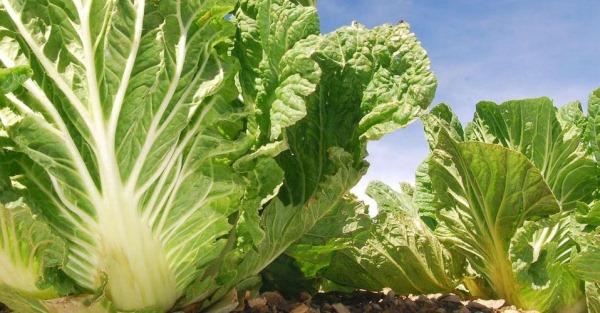
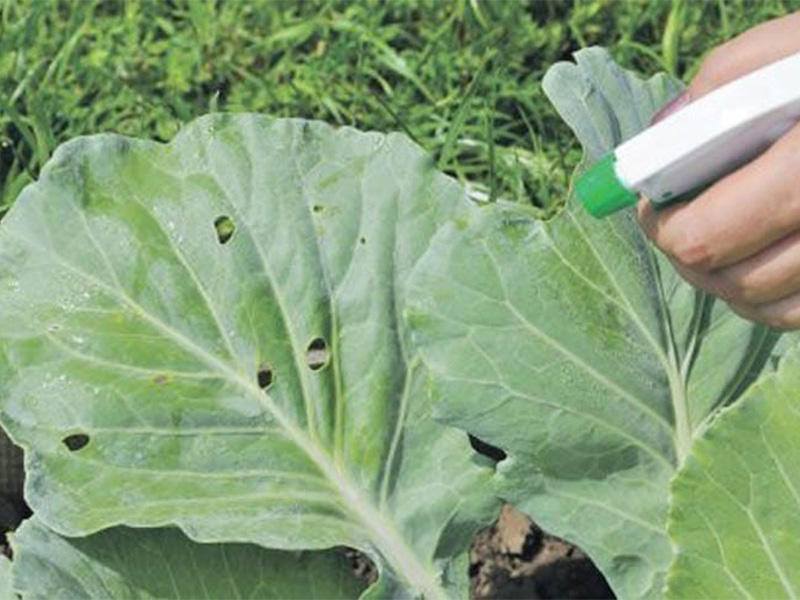
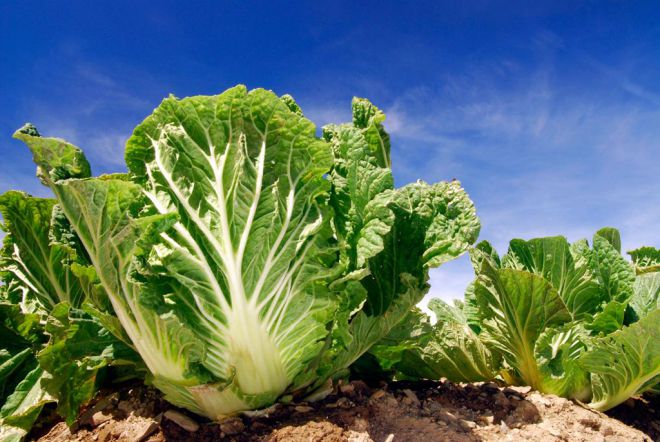 How to grow Chinese cabbage on your site?
How to grow Chinese cabbage on your site?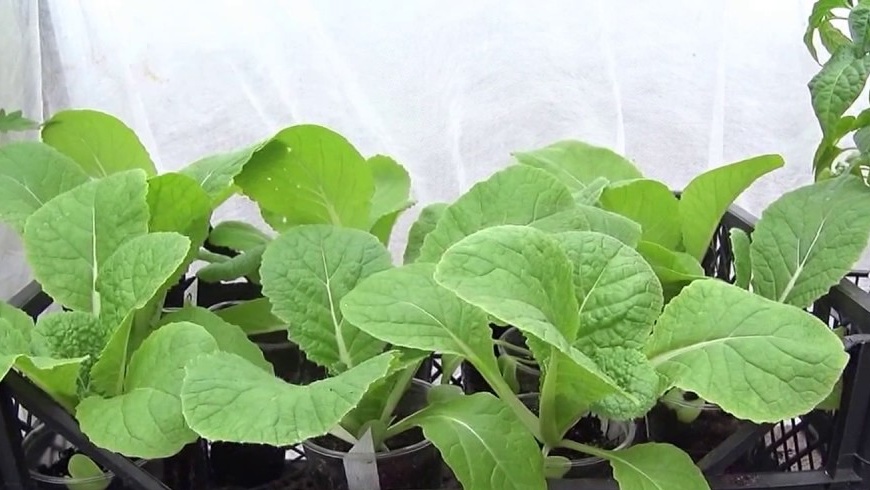 When to plant Chinese cabbage on seedlings in 2024
When to plant Chinese cabbage on seedlings in 2024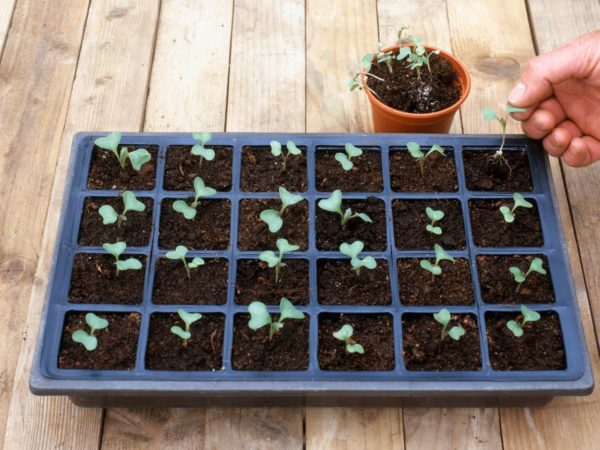 When to sow cabbage for seedlings in 2019 on the moon
When to sow cabbage for seedlings in 2019 on the moon Cauliflower: how to grow large snow-white inflorescences
Cauliflower: how to grow large snow-white inflorescences